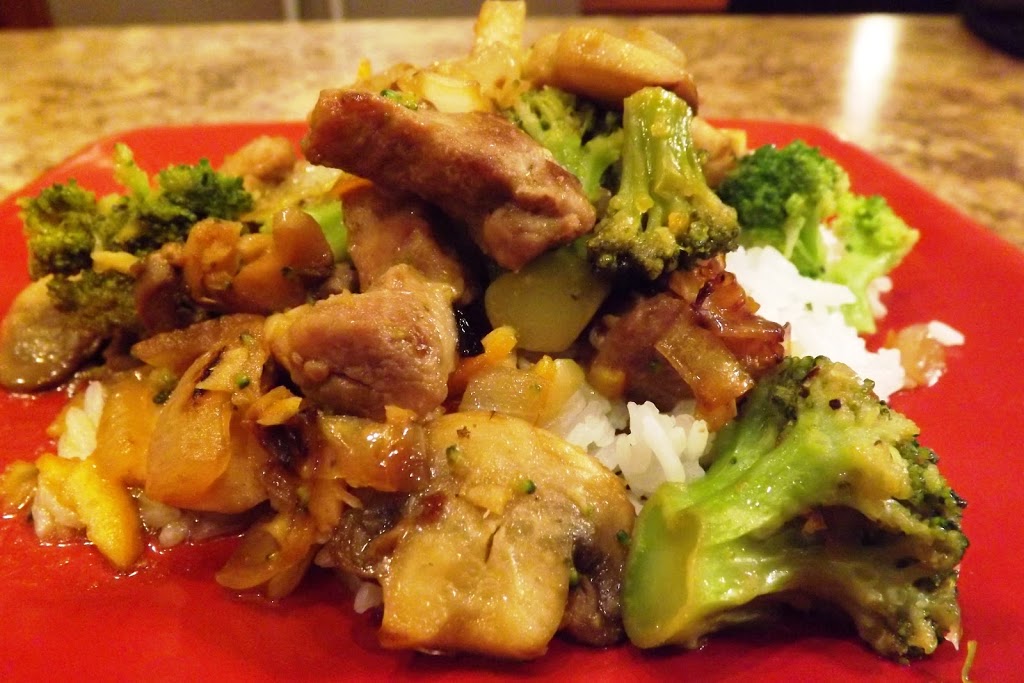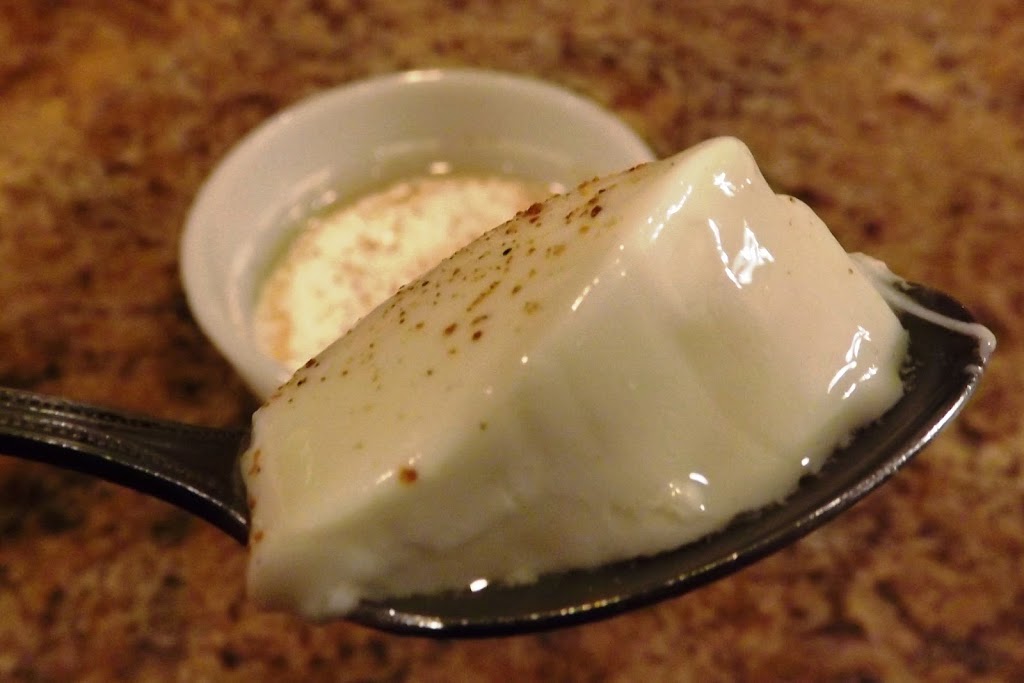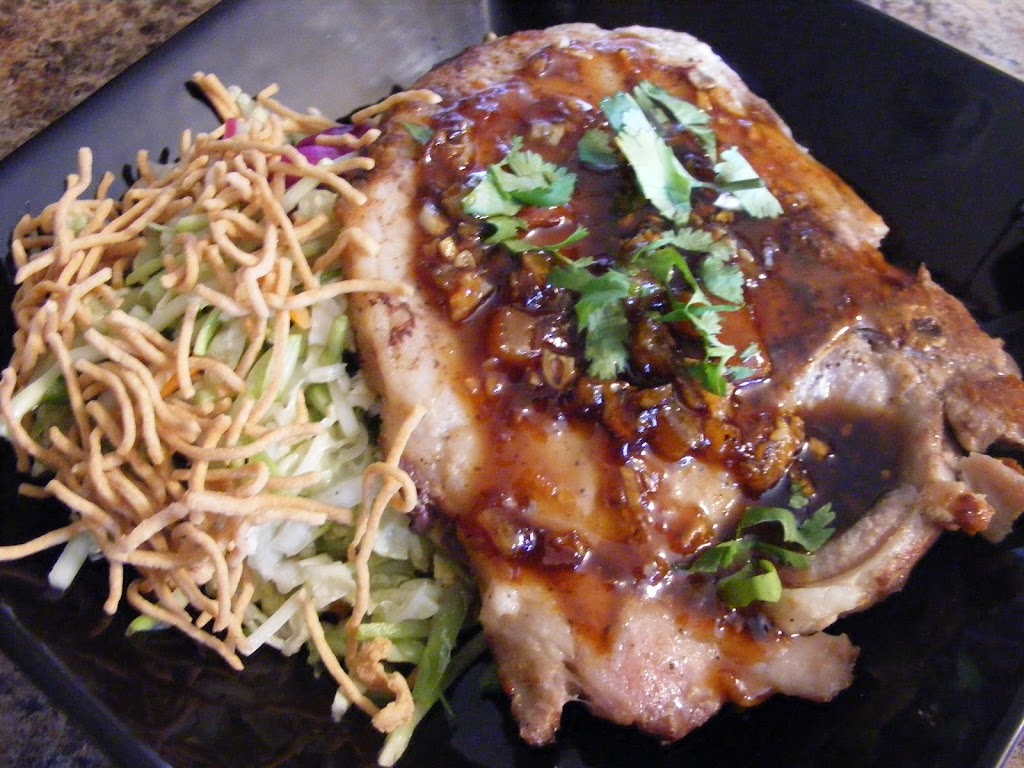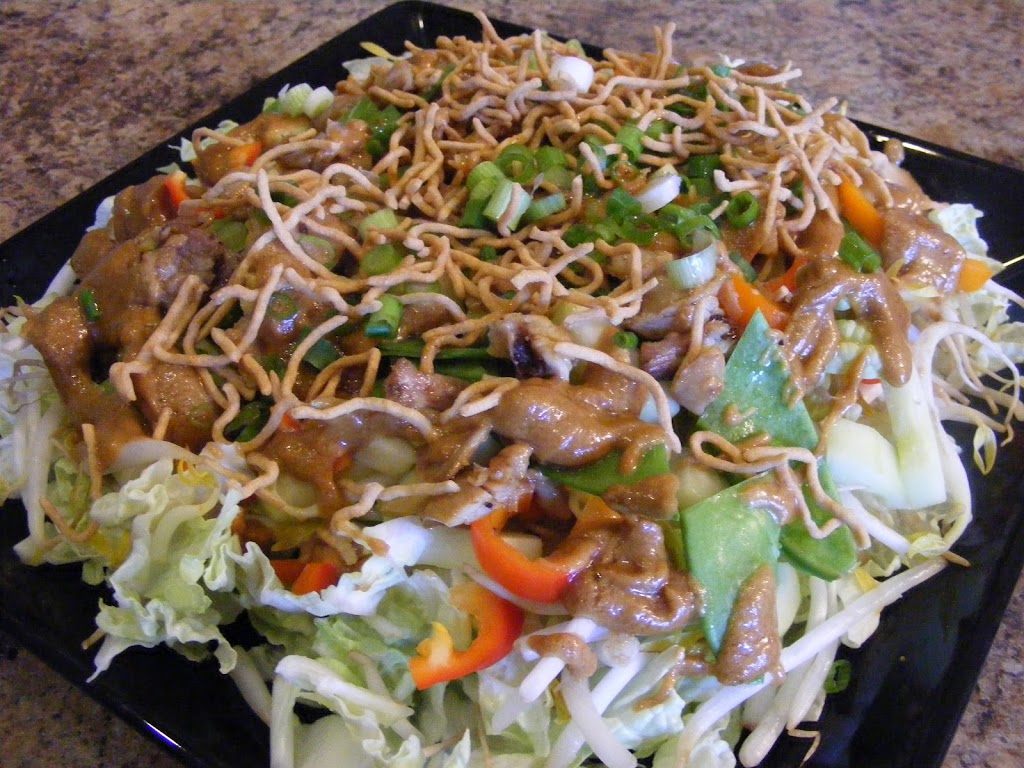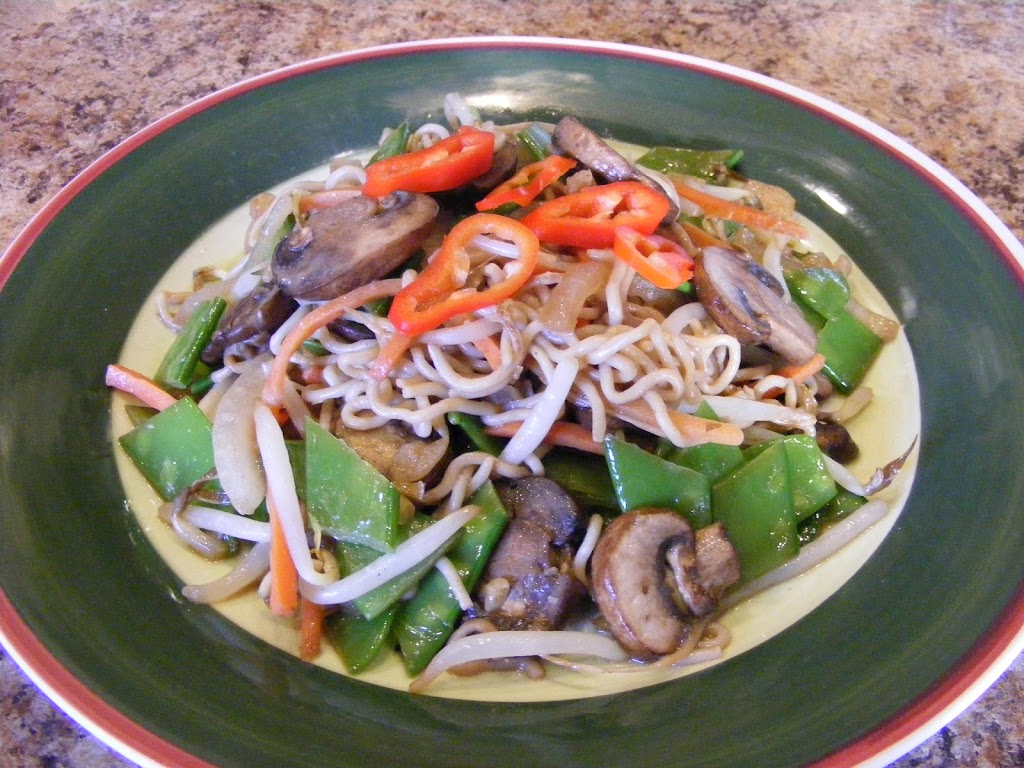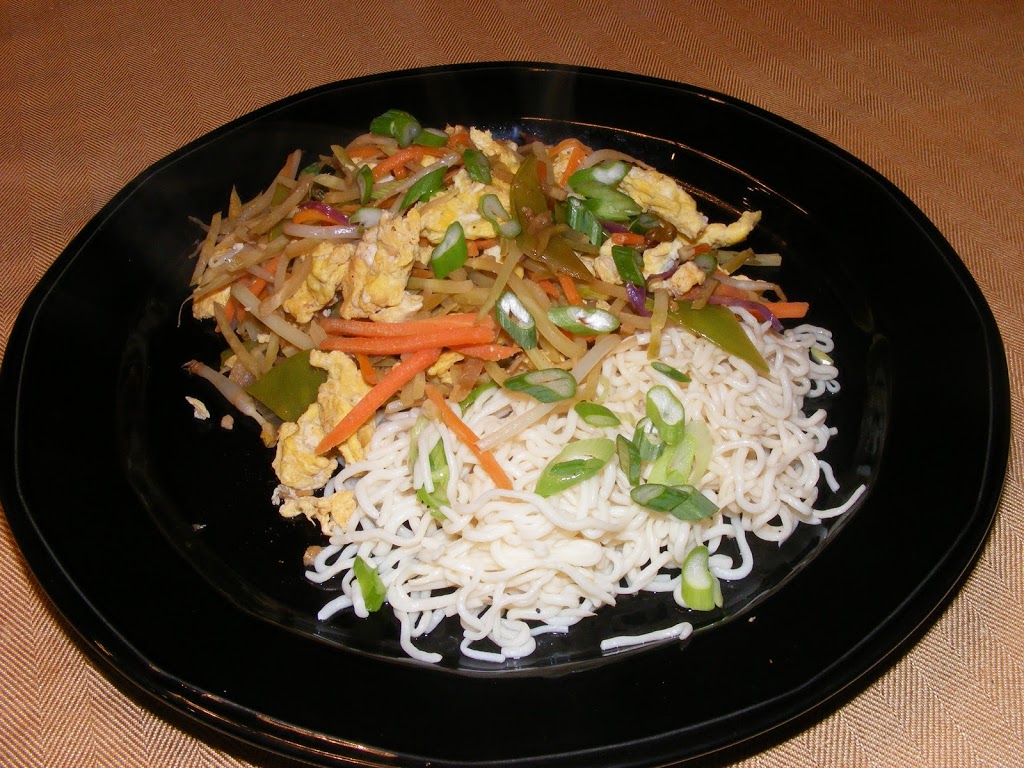8 ounces fresh mushrooms, sliced
Salt and pepper to taste
Sauce:
Mix together in a small bowl:
4 tablespoons orange marmalade
1 teaspoon soy sauce
2 tablespoon water
- Heat a non-stick skillet (10″) over medium-high heat. Add 1 tablespoon olive oil.
- When the oil is hot, carefully add pork slices. Brown on all sides. When browned, remove from skillet, cover and keep warm
- Add remaining teaspoon olive oil to the pan.
- Add onions. Saute until the just begin to turn translucent.
- Turn heat to medium. Add mushrooms, and let them cook, undisturbed for 2-3 minutes.
- Stir onions and mushrooms together. Add garlic and ginger. Mix together.
- Meanwhile, heat broccoli in a microwave until hot and still crisp.
- Add broccoli and pork to skillet.
- Pour sauce into skillet. Stir to coat. Serve when combined and hot.
Nutritional data:
Calories: 330
Fat: 14.1g
Sat fat: 4.3g
Chol: 96.3mg
Sodium: 112mg
Carbs: 16.4g
Fiber: 2g
Protein: 36.2g
